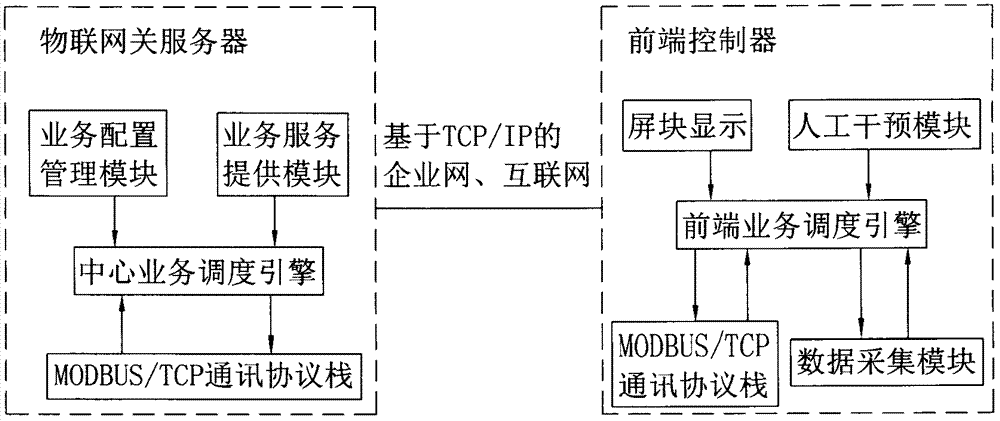Intelligent Internet of things cloud terminal system
A technology of intelligent objects and cloud terminals, applied in transmission systems, general control systems, control/regulation systems, etc., can solve problems such as application layer functions and standardized interface implementation of intelligent general IoT gateways that have not yet been discovered, and achieve unified management. Effect
- Summary
- Abstract
- Description
- Claims
- Application Information
AI Technical Summary
Problems solved by technology
Method used
Image
Examples
Embodiment Construction
[0018] Below in conjunction with accompanying drawing, the present invention is described in detail.
[0019] In order to make the object, technical solution and advantages of the present invention clearer, the present invention will be further described in detail below in conjunction with the accompanying drawings and specific embodiments. It should be understood that the specific embodiments described here are only used to explain the present invention, and are not intended to limit the present invention.
[0020] see Figure 1-Figure 2 , this specific embodiment adopts the following technical scheme: it includes a front-end field controller and an Internet of Things gateway server, and the front-end controller accesses the sensors, transmitters and executives with wired or wireless network interfaces on the production site through the drive protocol provided by each device Intelligent device or RTU, and use the MODBUS / TCP general protocol recommended by GB / T-19582.3 to tra...
PUM
 Login to View More
Login to View More Abstract
Description
Claims
Application Information
 Login to View More
Login to View More - R&D
- Intellectual Property
- Life Sciences
- Materials
- Tech Scout
- Unparalleled Data Quality
- Higher Quality Content
- 60% Fewer Hallucinations
Browse by: Latest US Patents, China's latest patents, Technical Efficacy Thesaurus, Application Domain, Technology Topic, Popular Technical Reports.
© 2025 PatSnap. All rights reserved.Legal|Privacy policy|Modern Slavery Act Transparency Statement|Sitemap|About US| Contact US: help@patsnap.com



